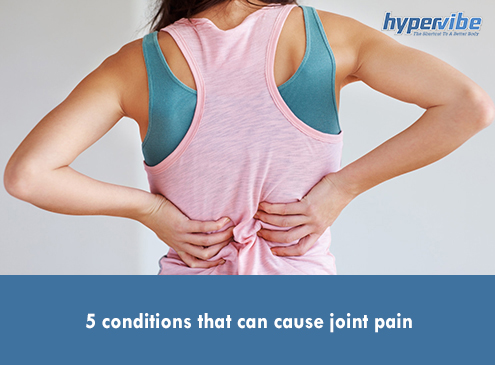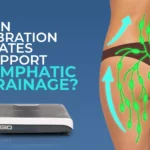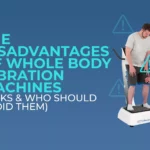
Joint pain can severely affect one’s ability to perform simple tasks, and can prevent them from engaging in physical activities, thus favoring a sedentary lifestyle and the accumulation of excess pounds. It can manifest as mild discomfort accompanied by soreness, or as pain, inflammation and swelling that is so intense that it limits one’s movement, and decreases their quality of life significantly.
Although in most cases joint pain is the result of a form of arthritis, such as osteoarthritis or rheumatoid arthritis, these aren’t the only conditions that can affect the joints and cause symptoms like inflammation, pain, swelling, soreness, warmth and stiffness.
Bursitis, joint dislocations, gout and pseudogout, hypothyroidism, lupus, osteomyelitis, psoriatic arthritis, ankylosing spondylitis, Paget’s disease of bone as well as strains and sprains can also be the triggers of joint pain and discomfort. In today’s article we’ll discuss 7 of the most common causes of joint pain and their typical treatment.
As its name suggests, bursitis is the inflammation of the bursae, a small, fluid-filled sac that acts like a cushion between bones and tendons, muscles or skin. The role of the bursae is to reduce friction between tissues, this cushioning sac being found around the joints of the knees, hips, shoulders, elbows and heels.
In most cases, this condition is caused by overusing a joint, and the areas more likely to be affected are the knees and elbows. Performing repetitive movements that put a lot of stress on joints or leaning your elbows on a hard surface every day, for a long time, can trigger bursitis.
Bursae sacs are filled with synovial fluid which acts like a lubricant, and is rich in collagen and proteins. The number of these sacs in one’s body varies, but most people have around 160 bursae throughout the body. Infections, trauma, as well as rheumatoid conditions can favor the inflammation of bursae and the development of bursitis.
Just like other disorders of the joints, bursitis manifests through pain, swelling and tenderness around the affected areas. Potential causes of bursitis for each specific joint are as follows: for shoulders, overhead lifting or reaching activities that are uncomfortable for the joints can trigger bursitis. For elbows, keeping the joint bent for a long time can trigger this condition.
Bursitis of the knees is more likely to occur in overweight people, but overusing the joint and chronic trauma from kneeling can also lead to the inflammation of the bursae. Typical treatment for bursitis includes pain medicines, ice and rest. Injections may be necessary if the symptoms don’t go away after 6-12 months, or in more severe cases, surgery for repairing the damaged joints may be recommended.
A chronic condition that affects the joints in the spine and is more common in teens and young adults, ankylosing spondylitis has no known cause, although it is supposed that this disorder is triggered by an abnormal gene (HLA-B27).
A long-term disease, AS affects men more than women and manifests through stiffness and pain of the spine and back, as well as through inflammation of joints in other areas of the body. The inflammation is accompanied by swelling and tiredness, and the symptoms develop gradually, over several months or years.
In some people the symptoms go away in time, but in others the manifestations get worse if no treatment is applied. Ankylosing spondylitis can’t be cured or reversed, but there are treatments that can help keep the symptoms under control; in most cases, a combination of medication, physiotherapy and exercise is recommended.
Anti-inflammatory medication and painkillers may be recommended for reducing the pain, and physiotherapy along with massage and specific exercises may be necessary for improving spinal flexibility and decreasing the stiffness, discomfort and pain.
Lupus is not a common condition, but it’s a painful one and even the mild cases can be very distressing and reduce one’s quality of life significantly. The term lupus is usually used for referring to SLE, systemic lupus erythematosus, which is more frequent in women between 15 and 50 years.
A complex disorder that affects many areas of the body, lupus manifests through symptoms like joint pain and swelling, rashes – particularly on the wrists, hands and face, and extreme tiredness. Given that the symptoms can be similar to those of other conditions, lupus is difficult to diagnose and often remains untreated for long periods of time.
Some forms of lupus affect only the skin, but SLE causes damage to the joints and internal organs as well, being more severe. Symptoms can range from mild to severe and depending on the body areas that are affected, one may experience no symptoms for a long period of time, or may experience sudden flare-ups.
SLE is caused by abnormalities of the immune system, so it is an autoimmune disorder. The organism of the patient starts attacking the healthy cells for reasons that aren’t understood, and the attacked cells become inflamed. It’s thought that genetics and environmental factors may play a role in the development of systemic lupus erythematosus.
As for treatment options, just like other autoimmune disorders, this one doesn’t have a permanent cure, but there are some solutions for keeping the symptoms from progressing, and reducing organ damage. Usually the therapy includes medications like immunosuppressants or corticosteroids.
This condition affects 1 in 5 people with psoriasis, being a type of arthritis that manifests through unpredictable flare-ups. Just like other types of arthritis, it causes the inflammation and swelling of the joints, which become painful and stiff. Besides this, people suffering from psoriatic arthritis also have red patches of skin with silvery scales, so the painful joints are accompanied by damaged skin.
PA affects all joints, including the spine and fingertips, and occurs when the body’s immune system attacks healthy cells and tissues, damaging them. This abnormal immune response causes the overproduction of skin cells as well as the inflammation of joints. Bacterial and viral infections, genetics, physical trauma and environmental factors can favor the occurrence of psoriatic arthritis.
As for symptoms, in some cases they get worse over time, and in other patients they go into remission for long periods of time, then the flare-ups come back. PA can affect one or both sides of the body and can cause, besides the already mentioned symptoms, painful, sausage-like fingers and toes, the swelling and deformation of the hands and feet, pain of the ligaments and tendons in feet, as well as lower back pain.
There’s no cure at the moment for PA, so just like in the previously mentioned cases, the focus of the existing treatments is to help manage the symptoms and prevent them from becoming disabling.
Both gout and pseudogout are forms of arthritis, but they manifest slightly differently. In gout, the inflammation usually affects the toes first and then moves to other joints; the skin becomes hot, swollen and red, and the joints are painful, making moving difficult.
Gout is caused by the accumulation of uric acid crystals in joints, and can lead to the formation of nodules under the skin, swelling, pain and warmth of the affected joint. This condition is treated using medications that lower the levels of uric acid in the body.
Pseudogout is a similar condition to gout, but usually affects the knee joint first. It’s also caused by the accumulation of crystals in a joint and leads to the inflammation, swelling and warming of the joint, plus in some cases calcification of the cartilage. In this type of arthritis the crystals are of calcium pyrophosphate, and the accumulation of these crystals is more common in the elderly.
Have something to add to this article? Comment below or join our Facebook community and share your thoughts with us!

Here’s how we use a vibration plate for weight loss...

Many people, especially beginners, notice an itchy or tingling “pins-and-needles”...

Yes, Vibration Plates or Whole Body Vibration (WBV) platforms, promote...

Are vibration machines bad for you? Yes, if used incorrectly....

The lymphatic system, also called the lymphoid system, is an...